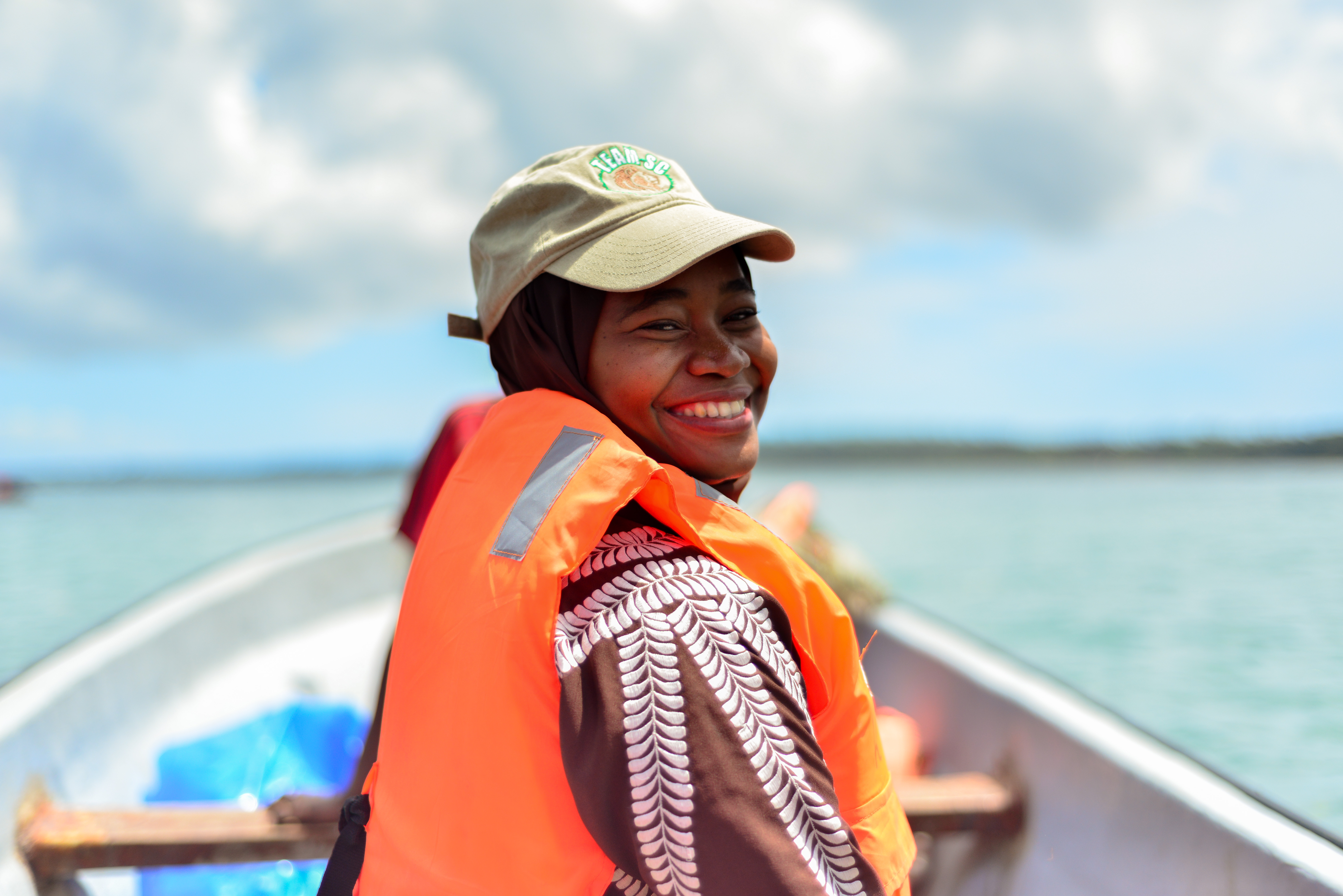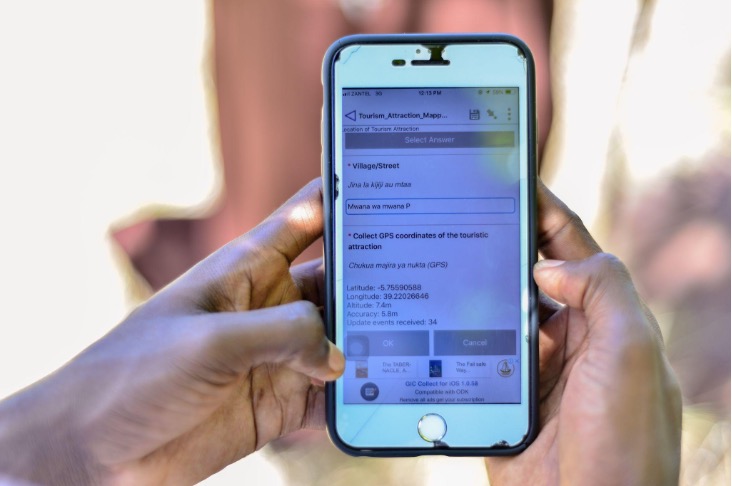Using Crowd Mapping and Mobile Survey to unravel "Unfrequented" Tourist Attractions
July 26, 2022
New technologies can contribute to making the tourism experience more accessible and rewarding for everyone; their development entails knowledge of the needs of all potential users, including seniors, persons with disabilities and others with reduced mobility. - UNWTO

A brave volunteer conoeing to Tumbatu Island to map unfrequented touristic attractions
The Accelerator lab and its partners embarked on a journey to understand the complexities of the tourism industry in Tanzania's Zanzibar archipelago by using crowd mapping and mobile surveys.
Zanzibar, one of the world's most beautiful tourist destinations, is endowed with beautiful white sand beaches, soft sands, clear warm waters, coral reefs, and a rich marine diversity, making it an ideal underwater destination for snorkeling and diving. Zanzibar is also rich in history, has a distinct culture, and has many other worthwhile places to visit in the archipelago.
According to the World Bank, the tourism sector in Zanzibar accounts for 30% of the country's GDP and 80% of foreign exchange earnings, with 15,000 direct and 50,000 indirect job creations.
Despite Zanzibar's uniqueness, only 20% of tourists return after their first visit. Unpopular or unadvertised tourist attractions that are unknown to tourists, among other factors, contribute to this.
‘We know that there are over one hundred unique attractions but only few have been gazetted’ —Mr. Omar Kali, Secretary, ZATO
In this context, the UNDP Accelerator Lab collaborated with OpenMap Development Tanzania and the State University of Zanzibar's youth mappers chapter to map unpopular tourist attractions with the goal of assessing the existing situation through crowd mapping and mobile surveys, and eventually creating a web map as a product that will show more features while also assisting local and international investors in exploring potential areas. This experiment was carried out at the start of the COVID-19 pandemic, the effects of which were already visible; with the closure of most hotels, the COVID-19-related shutdown of international travel had already resulted in lower foreign exchange earnings and domestic tax revenues.
The Zanzibar Association of Tour Operators (ZATO), the Zanzibar Association of Tourism Investors (ZATI), and the Zanzibar Commission of Tourism (ZCT) were all involved in providing mapping support and guidance.
This exercise was carried out while UNDP Tanzania was implementing the Tourism Recovery and Resilience project—a UNDP initiative aimed at assisting the government's rebuilding of the tourism industry in the new post-COVID economic era with the concept of 'Leaving No One Behind' by responding to some of the challenges that impede private investment in Zanzibar's tourism value chain and supporting the early recovery of those who were most affected by the pandemic.
Open Data Kit (ODK) was used to collect data. Over 155 attractions were mapped by adding information such as names, the types of activities available in the area, nearby services, pictures of the attraction, and other relevant information to be featured on the web map.

A volunteer collecting data using Kobo collect open-source application
Key findings and next steps
The experiment yielded the general conclusion that 41 (26 percent) of the 155 attractions were reported to be inactive and infrequently visited. A mobile survey conducted concurrently with the mapping revealed various challenges that supposedly led to the inactivity of the attractions. First, it was revealed that some cave history stories, or narratives, were contradictory, so authorities must review and produce a single consistent story or narrative. Furthermore, second, some caves were poorly managed, necessitating additional investment to attract more visitors. Third, it was evidently seen that some tourist attractions were not widely known or visible to the public; additionally, attractions near key or main attractions, such as a forest and World War II bunkers near the Mangapwani slave chambers, were underdeveloped. Fourth, the originality of most attractions, such as Bi Khole in Bungia, has diminished due to renovation efforts. Fifth, it was also revealed that attractions lacked communication materials and some, such as Maruhubi Palace Ruins and Kidichi Bath (Hamamu Bath), were in disrepair. Finally, most of them did not have digital fee collection systems, and in some cases, there was no system at all.
So, what is the team's next step? A data sharing session with the responsible authorities has been scheduled to share some of the key findings and lessons from this exercise. Once approved, a web map containing all mapped features will be made available to the public.
The team was able to collect a large amount of data in a matter of days by utilizing novel sources and collective intelligence methods. Indeed, collaborating with volunteers only adds to the fact that this approach can be useful in projects that lack or do not require long-term volunteer engagement.
The results of this experiment, we believe, will not only provide a compelling case for the adoption of this innovative approach to development in tourism programming circles, but will also help to inform various other strategies and policies. Furthermore, we anticipate that the results of this experiment will benefit the Zanzibar government through the Zanzibar Commission for Tourism (ZCT) by providing key novel feedback data that will support re-branding or marketing of the islands, resulting in an increased number of returning visitors and eventually increase revenue from tourism.
We invite more partners to join us in reimagining development as we use new data sources to address some of the most complex challenges of our time.
Missed our previous blog? Please click here
Authored by: Peter Nyanda, Head of exploration, UNDP Tanzania

 Locations
Locations